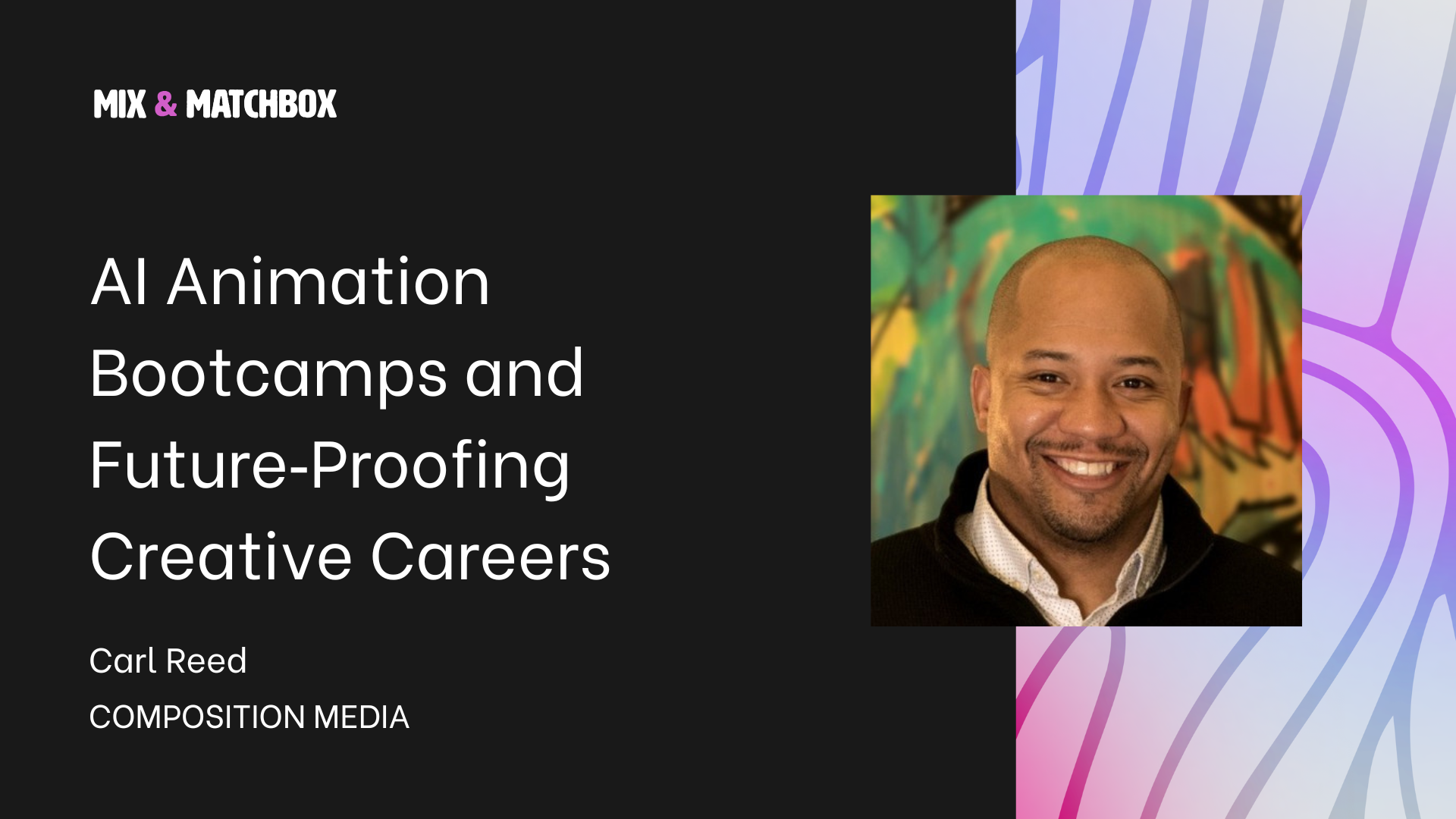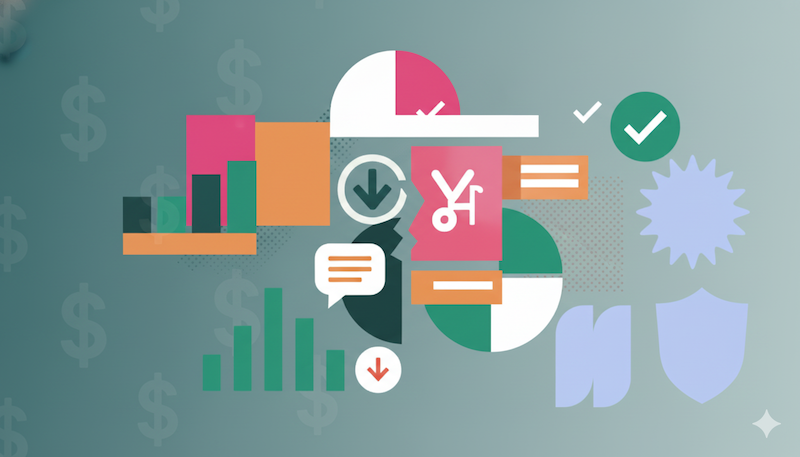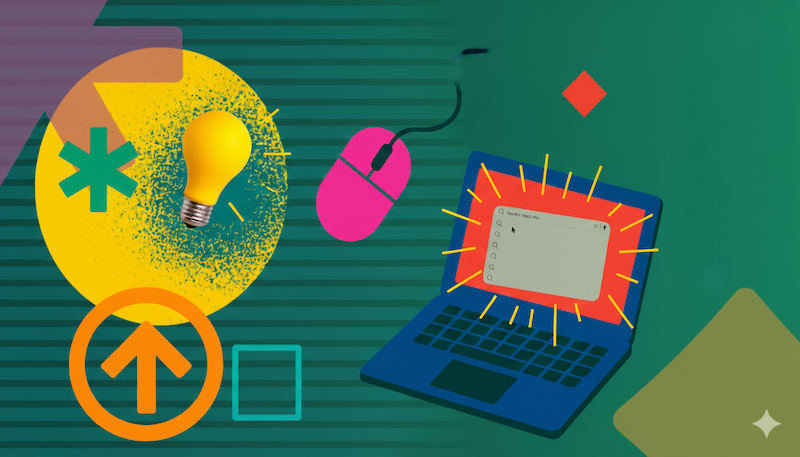Estimated reading time: 11 minutes
Mix & Matchbox Podcast – Episode 68
The animation industry has weathered two major technological shifts in the past few decades – the transition from hand-drawn to digital animation, and now the rise of AI-powered tools. While these advancements have impacted traditional workflows, they’ve also unlocked unprecedented creative possibilities for animators and storytellers.
We had the opportunity to sit down with Carl Reed, CEO of Composition Media and lead instructor of the AI Animation Bootcamp at Savvy Coders. Together, we unpacked lessons from past industry transformations and explored how AI is reshaping the future of animation.
Lessons from the Digital Animation Revolution
The shift from analog to digital animation was a seismic change that sent shockwaves through the industry. As Carl recalls, “You used to take literally 30 original drawings with pencil and paper on a pegboard, and you had to swirl the paper as you went so you could see the animation in motion. You’d get paper cuts, but it was part of the process—something people learned to both hate and love.”
The transition to digital tools like Flash and Toon Boom was met with a good deal of hesitation and fear. “You heard a lot of the same concerns we hear about AI today,” Carl explains. “People said the quality would never match up, that you’d never see it on TV or in film.” Yet, within just a few years, digital workflows caught on, making way for new studios and production styles that never could have existed before.
What the digital shift taught us:
- Animation became more accessible and cost-effective to produce.
- Entirely new studios and creative approaches emerged, challenging traditional powerhouses.
- While some roles disappeared, new career paths opened for animators.
The digital revolution didn’t just change how animation was made—it reshaped who could participate in the industry.
AI’s Role in the Next Animation Revolution
AI-powered tools are stirring up the same mix of curiosity and concern that digital once did—but this time, the potential impact is even bigger. While digital workflows streamlined production and opened doors for new studios, AI has the ability to transform the very foundation of how animation is conceived and produced.
Rather than simply making existing processes faster, AI introduces entirely new ways of working. Whether it’s generating concept art in minutes, automating in-between frames, or personalizing content at scale, AI has changed the landscape. These capabilities could lower barriers for independent creators while also reshaping how large studios operate.
As Carl points out, the digital revolution helped launch Powerhouse Studios that employ hundreds of animators. The AI boom could go even further, not just fueling new studios but also redefining what a studio looks like in the first place.
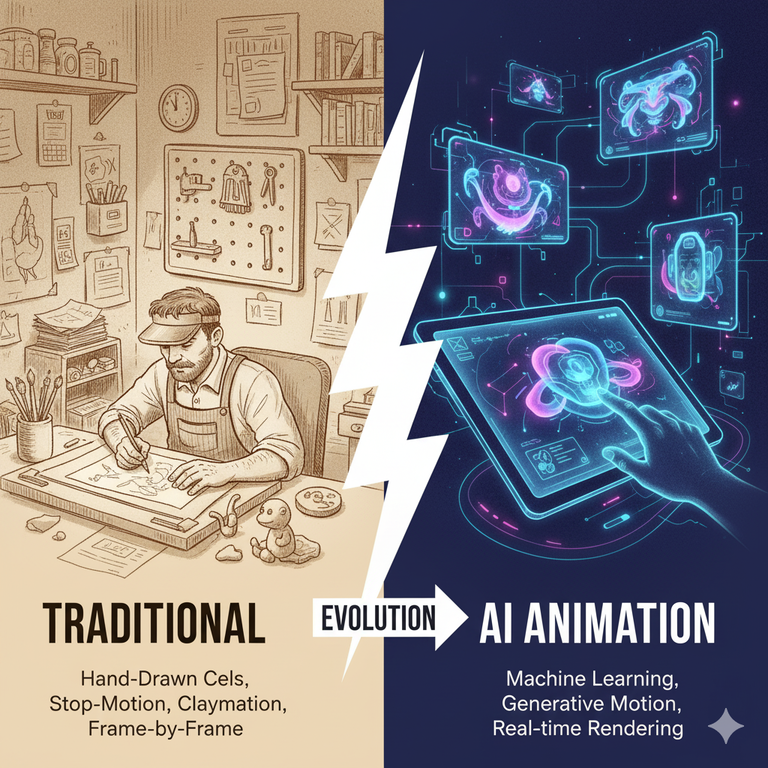
Owning Your Unique Style in the Age of AI
One of the key challenges—and biggest opportunities—presented by AI-powered animation is the need to define and cultivate a distinct visual style.
“You can’t technically own a style, but you also don’t want cookie-cutter work—the same generic look an AI might spit out by default. Because of how these models are trained and conditioned, they often generate results that feel identical to what anyone could produce with a simple prompt,” Carl explains.
Developing a unique artistic voice is crucial for standing out in a sea of AI-generated content. “How could we have something like Spider-Man: Across the Spider-Verse, a film that bends expectations with its bold style choices, if everyone relied on the same default look?” Carl says. “Just because you’re working in a different medium and leaning on an AI assistant instead of a human one doesn’t mean you get to skip the step of defining a unique style or giving your content its own voice.”
So how do you set yourself apart? Here’s a few ways to develop and protect your style in the AI era:
- Experiment with prompts – Don’t just accept the first output. Layer prompts, combine unexpected references, and iterate until the result reflects your vision.
- Blend traditional techniques – Mix AI outputs with hand-drawn or 3D elements to create something uniquely yours.
- Curate strong references – Build mood boards, collect textures, and study artists you admire. Use these as guideposts to shape your own style, not just as fodder for AI.
- Refine through post-production – Treat AI as a starting point, then apply your own finishing touches—color grading, compositing, or stylistic tweaks that give the work a human fingerprint.
- Stay rooted in storytelling – A unique visual style is powerful, but it should serve your story. Use AI to enhance, not replace, the narrative and emotional impact of your work.
By mastering prompt engineering, mixing mediums, and infusing your own creative vision, AI becomes a tool to amplify your artistry—not flatten it.
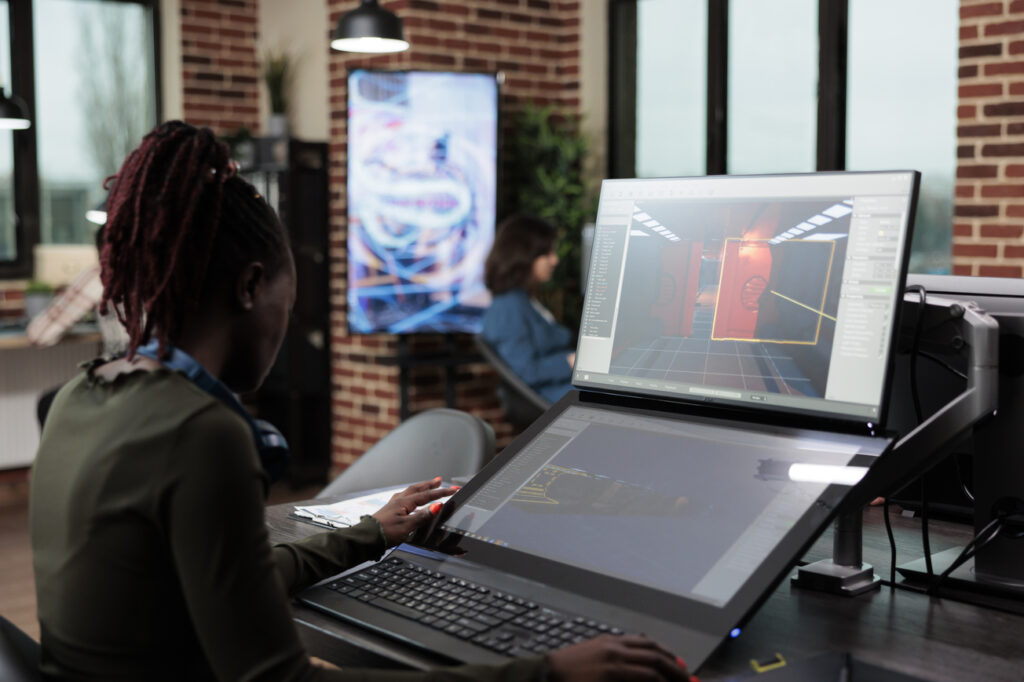
Prompt Engineering: Speaking the Language of AI Cinematography
One of the biggest keys to unlocking AI’s potential in animation is learning how to “talk” to it in the language of film. As Carl puts it, “We’ve had more than a hundred years to refine the craft of filmmaking—it’s a lot easier to build on that knowledge than to reinvent everything from scratch. AI interprets things in unique ways, but you still have to make sure you’re speaking its language. We like to think of AI as your DP, your cinematographer.”
Just like working with a human cinematographer, vague directions only get you vague results. “If you told a DP, ‘Make this scene feel emotional,’ they might deliver—but not in the way you expected. That emotion could be joy, sorrow, or something else entirely,” Carl explains. “Without clear direction, you leave too much open to interpretation. The same goes for AI—you need to be specific and detailed so it can deliver what you actually want.”
Tips for treating AI like your cinematographer:
- Use filmmaking terminology like pan-in, push-in, or pedestal up to guide the visual style.
- Give clear, detailed instructions about the mood, tone, and emotion you want to capture.
- Build a shared vocabulary with your AI tools so outputs remain consistent and professional.
Mastering the art of prompt engineering isn’t just about pushing buttons—it’s about learning how to direct. When you speak the language of cinematography, AI becomes more than a tool; it becomes a collaborator that can help elevate your creative vision to the next level.
Empowering Creators with Open-Source AI Tools
As AI-powered animation evolves, one of the most exciting opportunities for creators is the rise of open-source tools. For Carl and the team at Composition Media, these platforms offer something proprietary tools often can’t—true creative control.
“Our models, and really any tool we choose—even outside of AI—have to fit within a certain rubric,” Carl explains. “That’s why we’re drawn to open-source options. They let us get under the hood, modify, and build our own workflows. We’re not locked into someone else’s system—we can shape the tools around our vision.”
Some of the open-source tools they’re experimenting with include:
- Stable Diffusion 2.2 (Base): A cinematic-quality AI model that can be customized and trained to fit specific creative needs.
- Nano Banana: An image-editing and modification tool that gives artists precise control over AI outputs.
- CDream4: Another image-focused model with advanced customization features.
- Comfy UI: A user-friendly interface that ties everything together, enabling seamless integration into production pipelines.
The real advantage of open source is flexibility. “Through Comfy UI or custom tools, we can set our own models and lures for characters and styles without worrying about licensing or retraining,” Carl says. “Because it’s all local, we own the process.”
For animators and studios, this level of control isn’t just convenient—it’s essential. Open-source tools empower creators to develop a distinctive visual style, protect creative ownership, and adapt their workflows as the industry shifts.
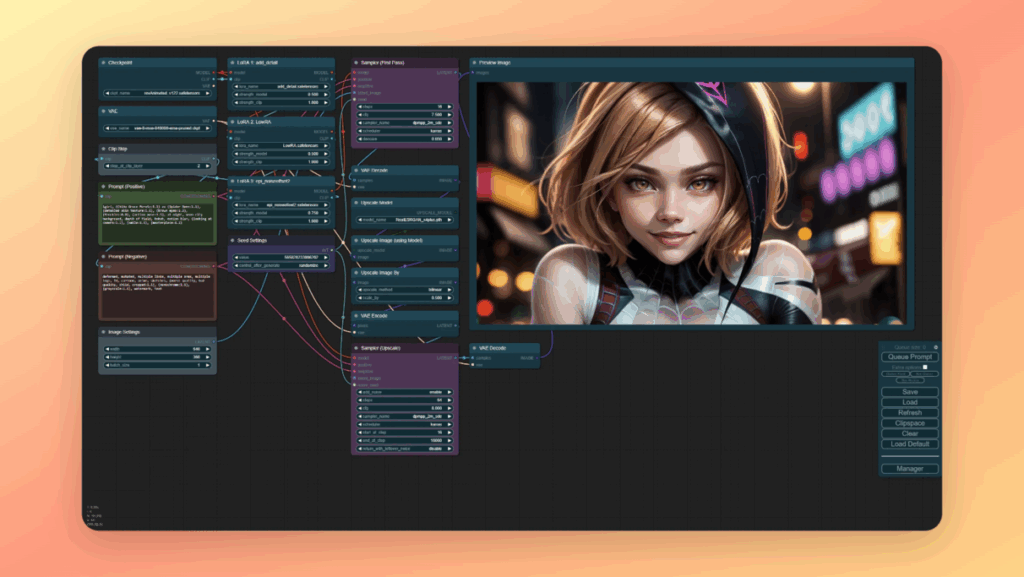
Democratizing Animation: Creators Can “Green-Light” Themselves
One of the most powerful shifts happening in animation right now is the way AI is lowering barriers and putting creative control directly in the hands of individual artists. “Now you can not only create the content, but also get it out to an unlimited audience—through social platforms, YouTube, Vimeo, and more,” Carl explains. “The reach is unprecedented.”
This democratization changes everything about how content is made, distributed, and monetized. “These days, you can essentially green-light yourself,” Carl says. “If you can produce a project within a reasonable amount of time and budget, you can distribute it, monetize it, and—most importantly—own your audience.”
What this shift means for creators:
- Global reach at your fingertips – Platforms like YouTube, Vimeo, and social media give independent creators access to audiences once reserved for major studios.
- Lower barriers to entry – AI-powered animation tools make it possible for more people to produce professional-quality content on their own terms.
- Creative ownership – Instead of handing projects off to studios or networks, creators can retain full control over both their work and their audience.
This changing landscape also challenges the traditional power structures of the industry. “It’s scary for the big studios—these are unprecedented times,” Carl notes. “That’s why you see so much fear-mongering around copyright and art theft. But the truth is, no art style has ever been protectable, and no method of creating an image has ever been copyrightable. What’s changing now is who gets to participate—and who gets to thrive.”
St. Louis: The Next Animation Hub
As the animation industry embraces AI-powered storytelling, Carl and the team at Composition Media see St. Louis as a prime location for the next wave of innovation.
“It’s a great opportunity for us to do it from St. Louis,” Carl says. “Here, the cost of living is low, you can actually buy a home, and yes—we get all four seasons. Compare that to the coasts, where even after twenty years at a major studio, you might still be crammed into an apartment with multiple roommates.”
But it’s more than affordability that makes St. Louis compelling. The city offers a chance for animators and creators to build thriving careers outside the traditional hubs of Los Angeles or New York. Remote work has accelerated this shift. “What’s happened over the last ten years—especially since the pandemic—is our ability to work from anywhere,” Carl explains. “We can collaborate with studios on the coasts, or even overseas, all while working from cozy, comfortable St. Louis. And we can enjoy some toasted ravioli while we’re at it.”
With its blend of affordability, connectivity, and culture, St. Louis is positioning itself as more than a backdrop—it’s becoming a destination for the future of animation.
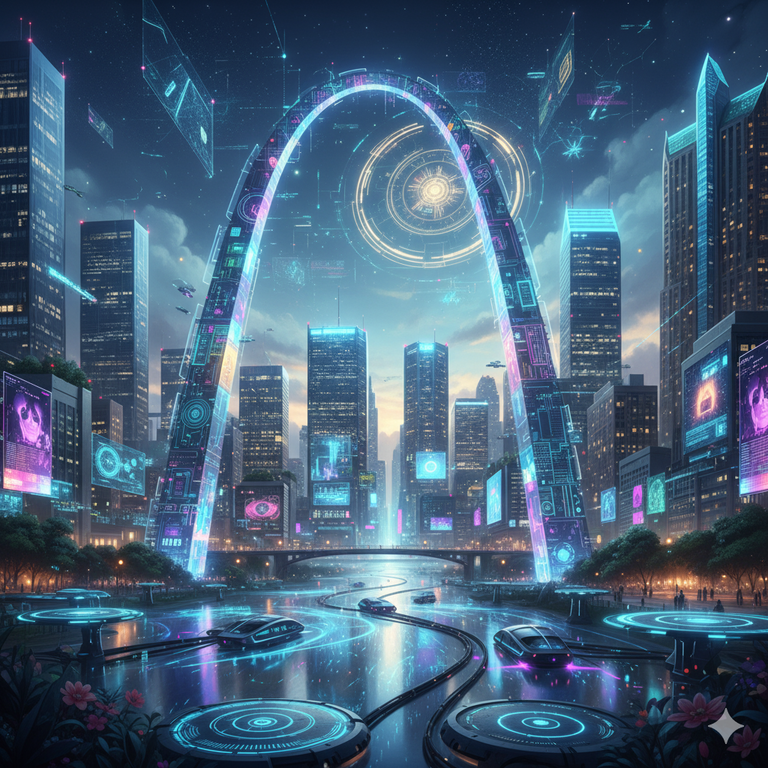
Preparing for the Future of Animation
As the animation industry continues to evolve, Carl offers some key advice for aspiring animators and filmmakers looking to future-proof their careers:
- Embrace traditional fundamentals: While AI-powered tools are transforming the industry, a strong grounding in traditional animation and filmmaking techniques remains crucial. Develop your drawing, animation, and storytelling skills to elevate your work.
- Cultivate adaptability: Be open to learning new tools and technologies, and don’t be afraid to experiment. The ability to quickly pick up and master new software and workflows will be a valuable asset.
- Develop a unique voice: In a sea of AI-generated content, standing out will require you to define and refine your own distinct artistic style and creative vision. Invest time in honing your personal aesthetic.
- Prioritize delivery over perfection: In the fast-paced world of professional animation, the ability to consistently deliver high-quality work on time is often more important than striving for absolute perfection. Learn to balance your creative ambitions with the realities of production timelines.
Join the AI Animation Revolution
If you’re ready to dive into the world of AI-powered animation, the AI Animation Bootcamp at Savvy Coders is the perfect place to start. Led by Carl Reed and the team at Composition Media, this immersive program will teach you the skills and techniques needed to harness the power of AI and bring your creative vision to life.
The next cohort of the AI Animation Bootcamp kicks off on October 20th, 2023. Sign up today to secure your spot and take the first step towards mastering the art of AI animation.
Never Miss an Episode
Get more insights on design, marketing, and all things digital. Subscribe to our Mix & Matchbox YouTube channel and join the conversation.
Want to Be Featured?
We love connecting with fellow creatives, marketers, and industry pros. If you’d like to share your story or expertise on the Mix & Matchbox podcast, let’s chat.
